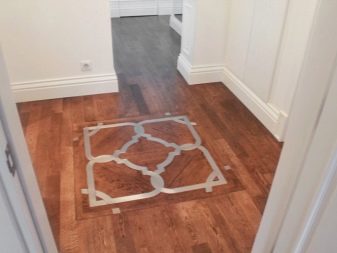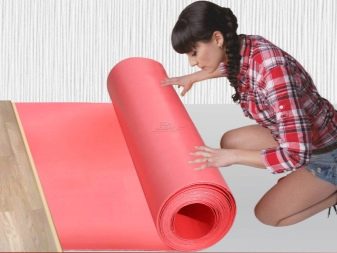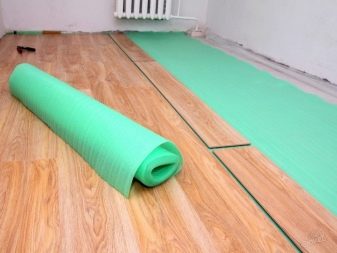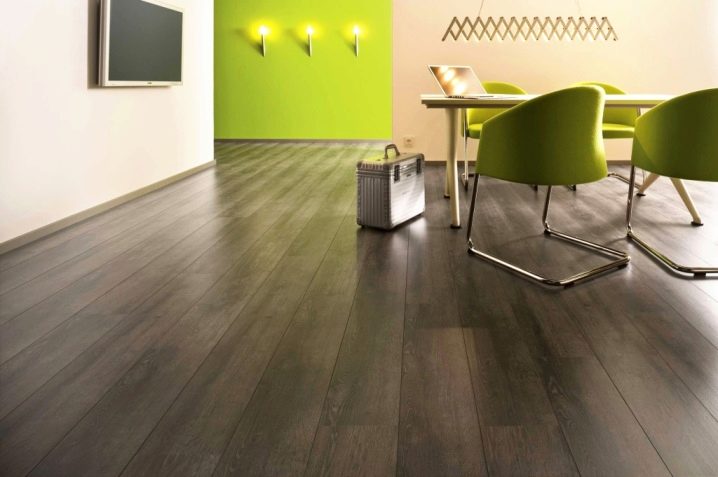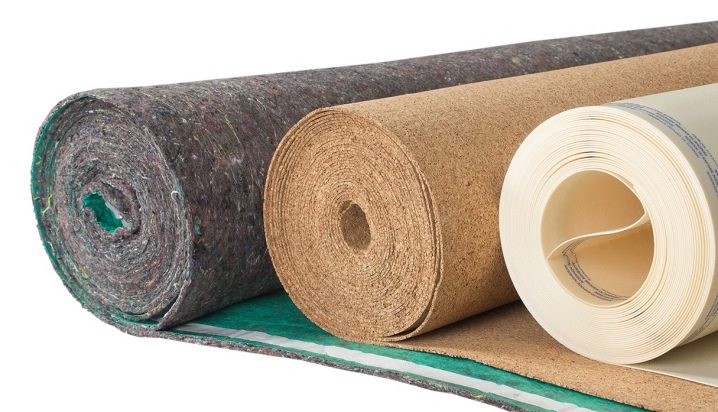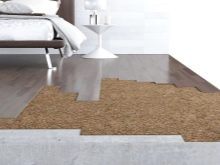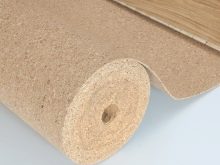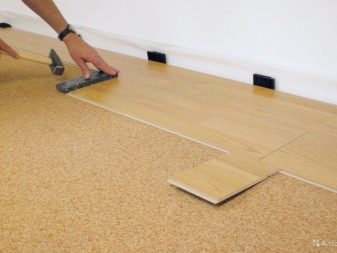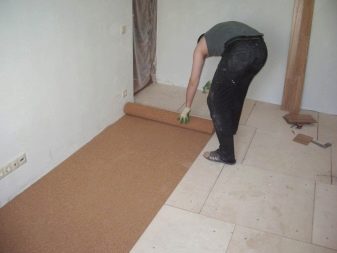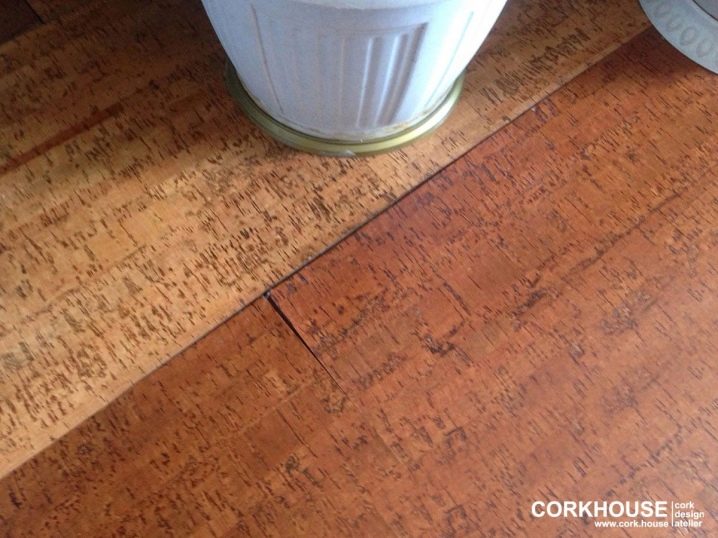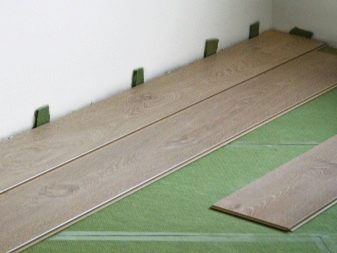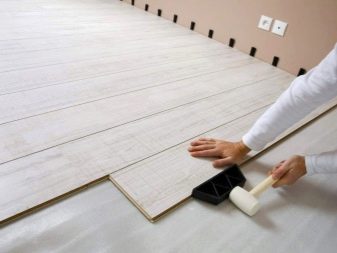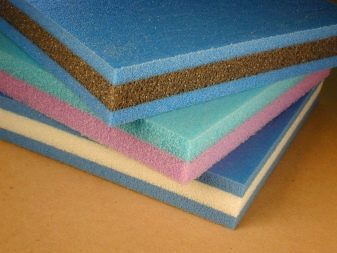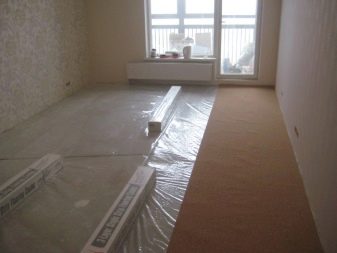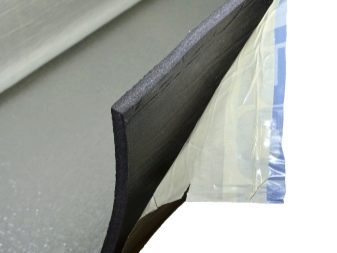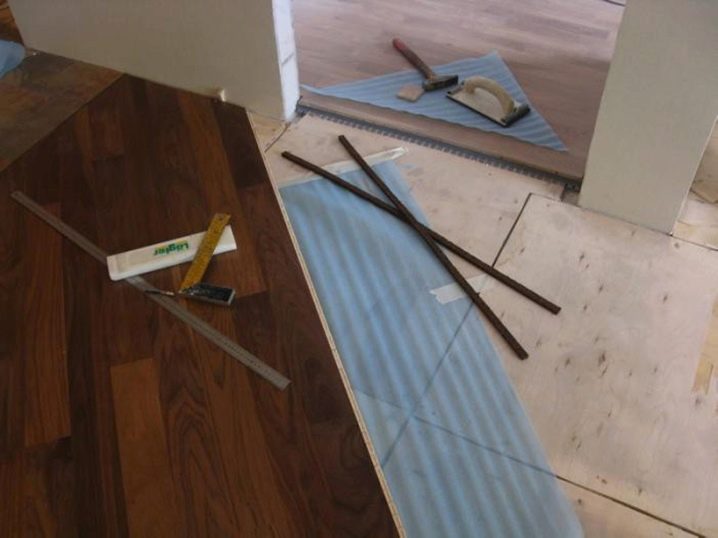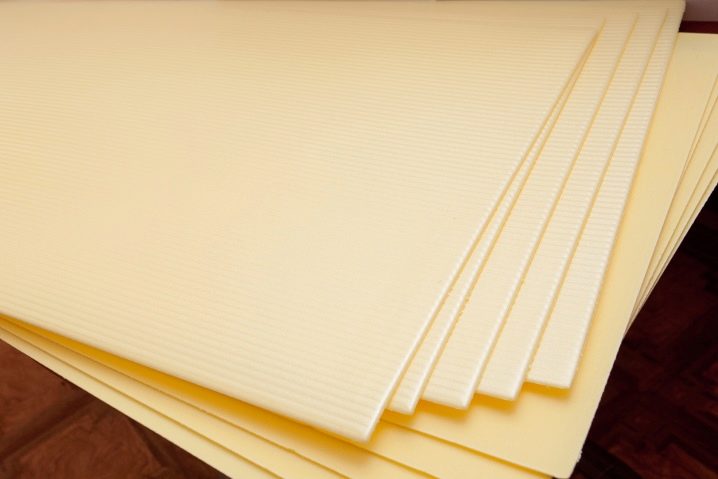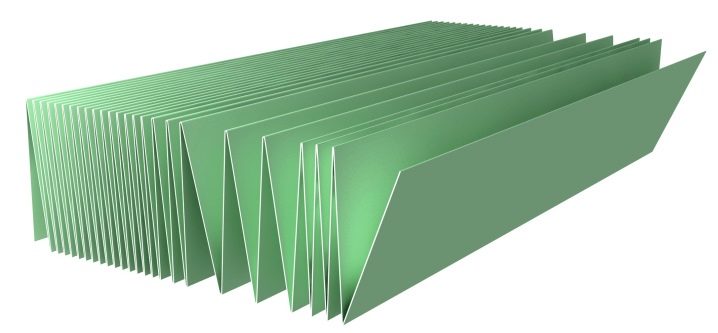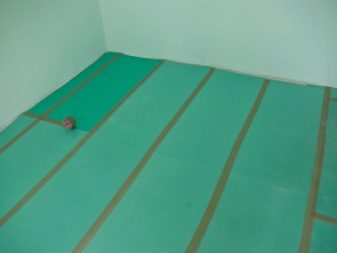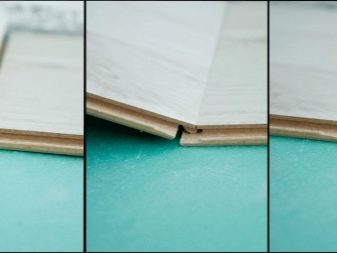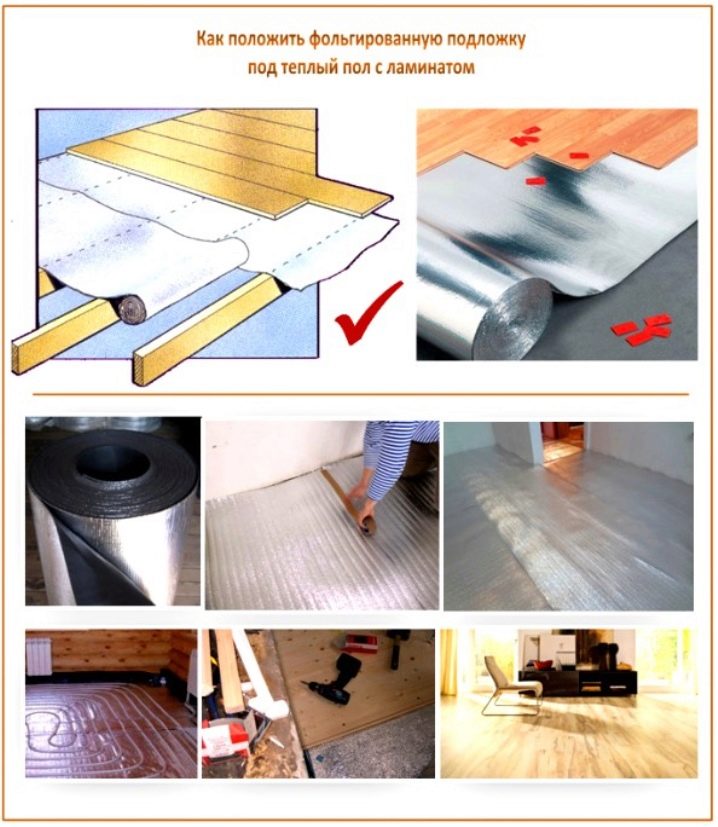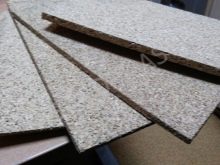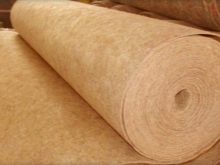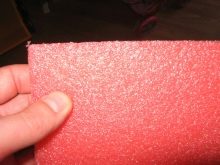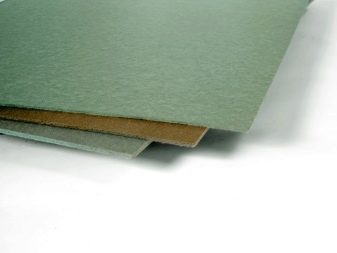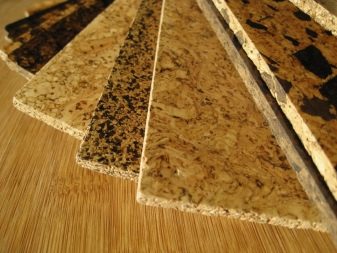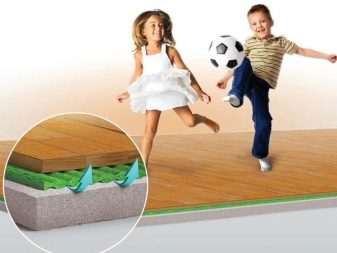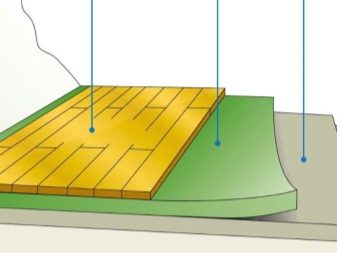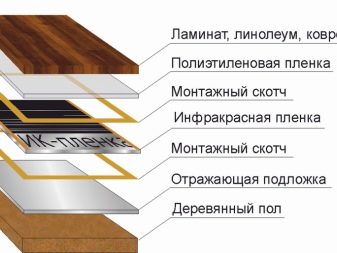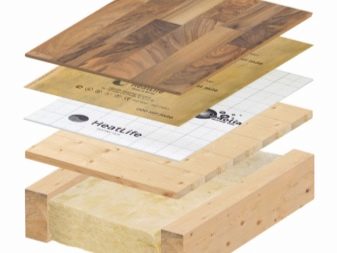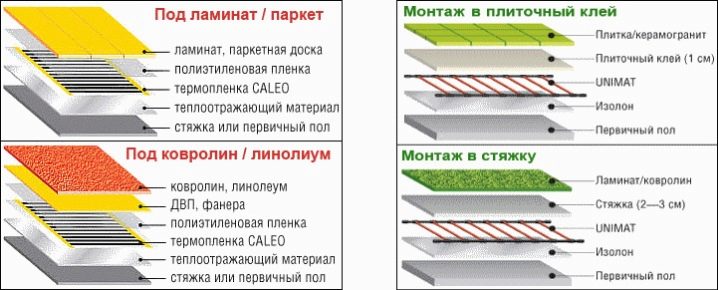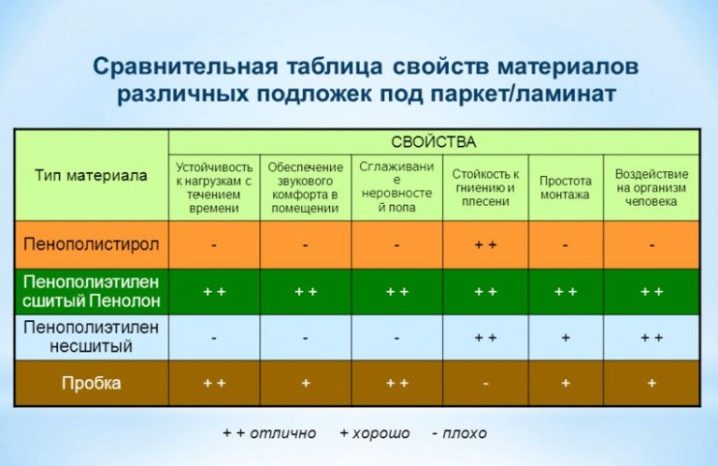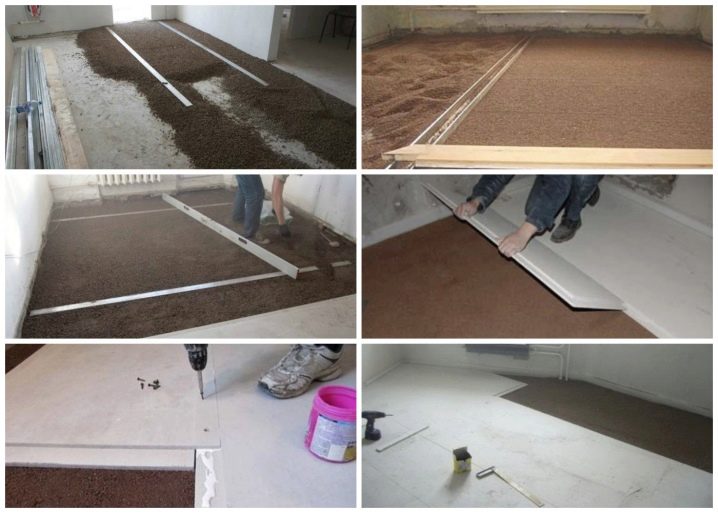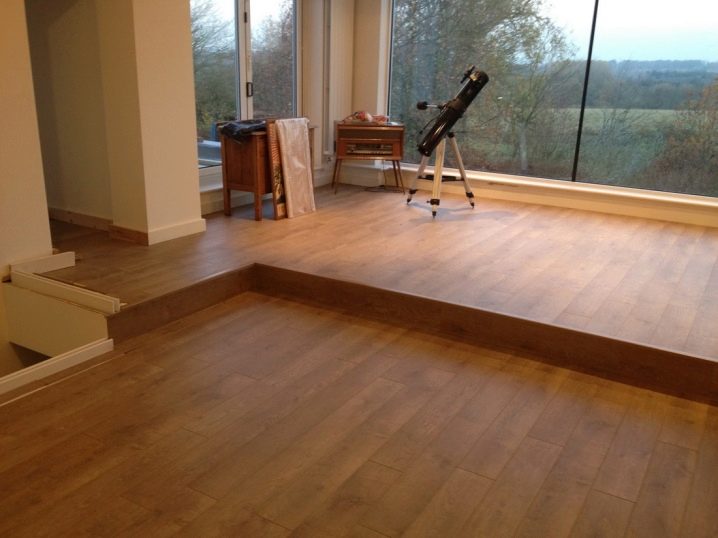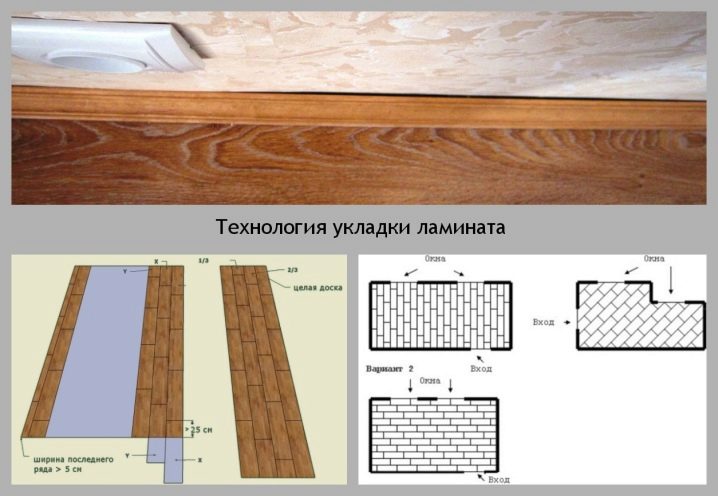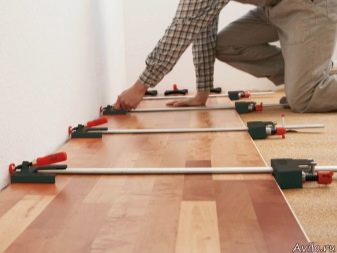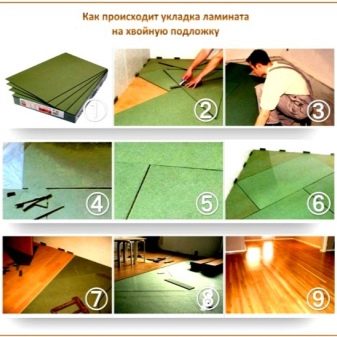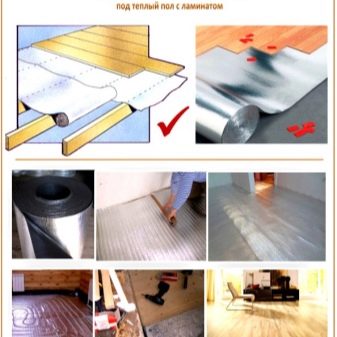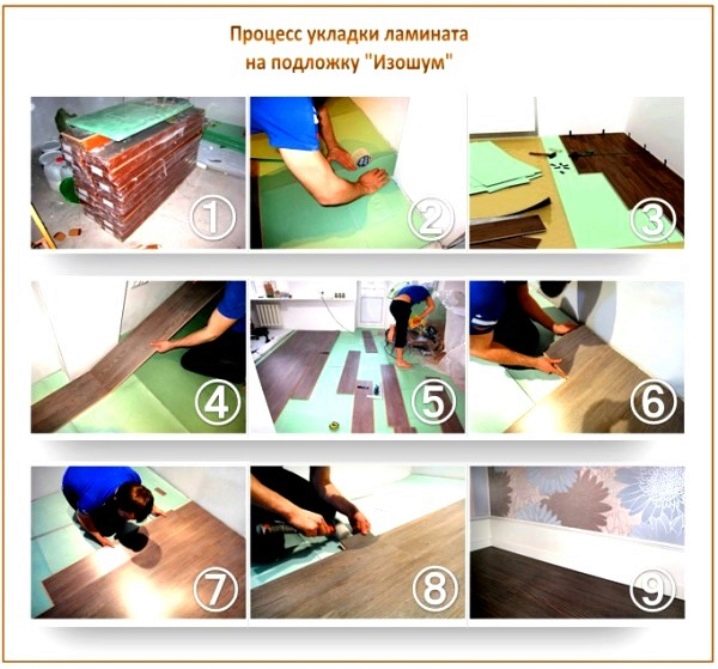Laminate underlay: which one to choose?
Ease of installation, reasonable price, decent appearance made laminate one of the most popular types of flooring. When laying it, an important role is played by the right choice of insulation material, which will increase the life of the laminated coating and preserve its neat appearance for a long period.
Why do you need?
The substrate is a thin and non-woven material, produced in the form of sheets or rolls, which is used as an intermediate layer during installation of the floor covering.
Let's see why the substrate is needed and what basic functions it performs:
- Base alignment. Often the roughing screed floor is not very high quality and smoothly, which is an obstacle to the proper installation of laminated flooring.In this case, a good substrate becomes a leveling material, which eliminates the small unevenness of the floor and drops, which greatly facilitates laying and allows the laminated floor to lie perfectly on the surface of the base;
- Sound insulation and reduction of shock and statistical load. When you step on the floor, it bends, deforms, and sags, in which case the lining creates a cushioning effect, softens the deformation of the floor. It also reduces acoustic noise while walking and when moving various objects, additionally isolates the room from sounds;
- Thermal insulation. Good gasket material reduces heat loss by performing a heat-conducting function. Due to the fact that modern versions of insulation materials have a low heat-conducting coefficient, the laminated surface remains warmed, the desired temperature in the room is maintained even in the cold season;
- Performing waterproofing functionThe substrate serves to protect the laminate from the effect of technological moisture, which the cement base emits, and creates a positive microclimate between the concrete screed and the flooring.Otherwise, fungus may occur under the coating, which may lead to the destruction of the laminate;
- Vapor barrier, or separation membrane, prevents the formation of condensate and the penetration of water vapor in the composition of the laminated coating. Usually in winter time, the temperature inside and outside varies significantly, and therefore the formation of steam. In this case, the vapor barrier material will not allow the condensate to penetrate inside the laminate. Such an insulating layer is necessarily necessary for rooms located on the first floors, in the basements. In other cases, it is used as needed.
Laying the substrate under the laminate with the insulating material already attached to it under the bottom, as well as under the vinyl laminated coating is not required.
Kinds
There are several varieties of lining material. They have approximately similar characteristics and, given the presence of components used in production, they can be divided into two main groups: natural and polymeric or artificial.
Natural
There are several options for natural materials.
Corkboard
It is produced from small granules of cork bark in a sheet and roll form. It is one of the best foundations for laying a floating floor or an expensive laminate with a moisture-proof locking system.
There are several types of this material:
- Classic. It is a natural pressed cork crumb. It does not contain toxic substances, it is absolutely eco-friendly, has anti-allergic properties, non-combustible, does not accumulate static electricity;
- Cork with rubber. Here, synthetic rubber acts as a binding component for the cork crumb. Such a foundation is well resistant to moisture and absorbs vibrating sounds;
- Parkolag, or bitumen-cork. It is made from Kraft cardboard, on which cork granules are glued on the bituminous mixture. Such a stopper is an analogue of rubber, but it is susceptible to fires and it can cause the smell of bitumen in rooms with good heating.
The main advantages of cork substrate:
- Not pressed, not subject to shrinkage, does not lose its shape during use;
- It has noise and heat insulation properties;
- It has a long service life;
- Not subject to decay processes;
The main disadvantages:
- High price;
- Bad vapor barrier. Such material does not need to be used in rooms where there is a high humidity, for example, in kitchens, bathrooms.
- When laying on a concrete screed it is necessary to use an additional moisture insulating layer.
Conifer
Coniferous - is a wood substrate, which is made from coniferous wood. It is a purely natural product. There are no chemical binders. It has a sheet form. Like a cork, it is completely environmentally friendly, therefore, the benefits are almost the same as those of cork litter.
Advantages of spruce substrate:
- It has a porous structure, gives the floor to breathe better than other materials;
- Well preserves the shape, even after a long period of operation, the plates are not deformed;
- Excellent sound and heat insulation;
- Additionally levels the surface;
- Convenient and easy to install;
The disadvantages of coniferous litter include:
- It absorbs moisture well, so condensation and mold may form on the surface of the material;
- Vulnerable to bacteria and fungi if stacked on a poorly dried base;
Polymer, or artificial
Artificial materials also come in various forms.
Polyethylene (izolonovaya)
- Polyethylene foam, or differently Isonon, can be stitched or filled with gas. The substrate of gas-filled polyethylene foam quickly loses its shape and elasticity, while the insulation material of cross-linked polyethylene retains its function much longer even under considerable loads. There is also a foil isolonone lining based on polyethylene or polystyrene. Basically, it is intended for use under infrared floor.
- Polypropylene gasket often issued for plastic wrap or vice versa. Such substrates are very similar in appearance, both have a foamed structure, but polypropylene has high heat resistance, hardness, and is more resistant to abrasion.
- Polyurethane backing usually produced in the form of sheets. It has excellent leveling and soundproofing properties. Ideal for laying on the base with differences of over 5 mm, it has excellent leveling and soundproofing properties and quickly fits. Suitable for both domestic and public spaces.Lay such material only on a dry surface.
- Currently, the new insulation material is quite popular - isoplat. In its manufacture used top-quality wood with the addition of various paraffins. Such a substrate has several advantages, the main of which are good sound and heat insulation, the absence of chemical additives in the composition. The room will be kept warm and will not penetrate the extra noise.
The use of such a lining when installing the floor makes it possible to get an even and high-quality coating.
Main advantages:
- Not afraid of moisture;
- Easily hides all uneven ground;
- Low price, unlike natural options.
But, unfortunately, it quickly loses its elasticity, sags, tends to accumulate static electricity.
Polystyrene foam
The substrate is made of extruded polystyrene, foamed polymer and has a rare microstructure, representing a large number of air bubbles with strong walls. Expanded polystyrene acts as an analogue of conventional foam, but differs from the latter in higher thermal conductivity and strength characteristics and absorbs moisture much less.
Polystyrene foam substrate is available in the form of "accordion", cut plates, rolls. Roll will be applied on large areas, folded "accordion" is easily transported and used in rooms that have complex geometry.
The extruded polystyrene gasket produced has various properties, it can be more durable, warm, wear-resistant, and differ in the level of water absorption.
The advantages of this substrate:
- Ideal in price-quality ratio. The cost of such a product is more expensive than a plastic lining, but it retains its shape longer and has a longer service life;
- Tough enough, therefore, allows you to keep your shape well, to compensate for uneven floors and is suitable for use in rooms with high loads;
- Has a good level of noise insulation, sound insulation;
- Moisture resistant;
- Quick and easy to install.
Among the disadvantages of such a substrate, the following can be noted:
- May be harmful due to possible toxicity, so be sure to check the certificate upon purchase;
- In the process of long-term use, it may lose its shape, crumble, therefore it is necessary to take into account the density of the material.
Foil
It is a combination of two layers, one of which is the base and the other is a reflective coating. The basis can be made of expanded polystyrene, foamed polyethylene. Metallized polypropylene film or aluminum foil acts as a reflective coating. Such a structure enhances the protective functions of the substrate.
What is important is the type of coating on which the foil insulating material will be laid. Metallized film is used for cement screed or concrete, since the insulating material with aluminum coating is destroyed by the effects of alkalis in concrete.
The main advantage of the foil substrate is increased thermal insulation of the floor (usually by 30%), high moisture resistance and additional waterproofing.
You need to know that the effect of preserving the heat of the floor can be obtained only with proper laying of the substrate, namely, a layer with foil should be placed on top. When using such a substrate, the cold floor will become much warmer.
There is also a double-sided metalized lining, the heating properties of which are even higher.
The advantages are:
- Good reflectivity;
- High moisture resistance and heat insulation;
- When working with such material, little waste is generated;
- Good resistance to stress, the formation of fungi, bacteria.
Of the minuses can be noted:
- High enough cost;
- Low density can lead to loss of the original shape of the material during prolonged use.
Combined
Combined and other variants of substrates are currently in high demand. Both natural and synthetic species are available.
- Rubber box the substrate consists of synthetic rubber and cork granulate. Available in rolls. Well suppresses noises, vibrations of various origin. It is mainly used as an antistatic coating in rooms with special conditions for dielectric resistance;
- For dry screeds apply wood chip materials. They are not recommended to be installed in rooms with high humidity. Such substrates include plywood, which is treated with special moisture-resistant substances, fiberboard, cellulosic filler, chipboard;
- Jute, linen, bamboo the substrates are very similar, made from natural fiber, hypoallergenic, breathable, but have the lowest thermal insulation and are very thin. There are combined options of flax, jute and wool, thus achieving maximum hardness and heat insulation of the material;
- Felt the substrate is a non-woven polyester fabric. This is a reliable and inexpensive option, it is non-toxic, does not undergo rotting processes, does not oxidize, reduces the level of impact noise;
- Teplon, one more kind of bases under a laminate, is made from the made foam polystyrene and possesses the improved characteristics. Does not contain harmful impurities, almost completely does not pass moisture, well repels dirt and dust. Lightweight, extra strong, elastic material;
- There is also a substrate from fiberglass. Mainly used for laminate 5-7 mm thick. Environmentally friendly and has a very high mechanical strength: its plates are not subject to deformation. The material is elastic and has good sound insulation qualities;
Material Features
The substrate is an essential element when laying laminate flooring.Depending on the initial components that are used in the production, the gasket material has a number of features and certain technical characteristics.
The main and important property of any substrate is that it does not allow the underside of a wooden coating to rub off on the screed, thereby preserving the integrity of the floor and increasing its durability.
The gasket should:
- Have the properties of insulation laminate coating and keep warm well. This feature of the substrate is especially important if you plan to use a heating system or floor heating. In this case, the use of such an insulating material will allow the warm air to evenly spread over the laminate coating, and the concrete screed will not heat up;
- Be moisture resistant and reduce sound penetration;
- To be mechanically stable, dense, to maintain shape and thickness for a long time;
- During the period of use do not enter into chemical reactions with alkaline compounds;
- The substrate should not contain harmful substances, be environmentally friendly;
- The perforated substrate will provide good ventilation of the space under the floor and contribute to microventilation of the coating;
- It is better that the material that is placed under the laminate, was treated with a bactericidal agent that will prevent the reproduction of various microorganisms.
Which one to choose?
When choosing a substrate, it is necessary to take into account the condition of the subfloor and the characteristics of the room where you plan to apply it, as well as the requirements for the gasket material specified by the laminate manufacturer. In the matter of choosing a suitable lining material, it is important to take into account reviews and opinions of specialists about the product, as well as information from customers with experience in using such a product.
You do not need to buy an expensive, high-quality substrate, if you put a simple and cheap laminated base, and vice versa. Equality must be observed. All requirements and wishes for the cushioning material are specified in the instructions of manufacturers of laminate.
The substrate for the concrete base should have steam, moisture insulating and softening properties, and therefore it is better to use insulating gaskets made of synthetic materials. They will smooth out the defects of the uneven base and make a high-quality installation of the laminated coating.However, you can lay and natural, but in this case, the main thing - to ensure their protection from moisture. In this case, an additional layer of insulation in the form of a film of polyethylene must be laid on the concrete or cement screed, and coniferous or cork material should be placed on it.
If a laminate board is to be laid on a wooden floor, it can be such materials as plywood, chipboard of various types, boards, then almost any variant of insulation material can be used here. For wooden coatings, the waterproofing properties of the substrate are not so important, because such bases must be dry and protected from moisture. In this case, the choice should be based on other properties of the counterfeit material: sound, thermal conductivity, naturalness, price.
If you plan to install on a warm floor, then regardless of what type it is - electric or water, the lining material must be chosen for the following reasons:
- The substrate should have a significant thermal conductivity, its thickness, as well as thermal insulation functions should have minimal performance. The smaller the value of thermal resistance, which is indicated on the packaging of the flooring, the better it will be to pass the heat insulating layer.
- For floors of this type, manufacturers produce special substrates that have perforations in order to freely transmit heat.
- When choosing a substrate for a laminated coating, be sure to pay attention to the presence of a certificate of conformity confirming the quality and safety of this product.
Dimensions
The thickness of the substrate is different, and therefore it should be chosen based on the recommendations of the manufacturer and taking into account the type of laminated flooring. For a surface that is perfectly aligned, a thin substrate will do, but it’s impossible to compensate for the rough substrate due to the thick substrate. On uneven pavement, it will sag and press together, causing the laminate locks to break.
The recommended substrate thickness is 2-5 mm. It is important to take into account the technical characteristics of the laminate and the roughness of the rough base. A thicker substrate is designed for rooms where additional sound and heat insulation is needed.
Lining material can have the following thickness:
- 2 mm is the minimum that is needed to balance the small irregularities of the base;
- 3 mm is an excellent option to finally smooth out the curvature of the floor, extinguish noise when walking and act as a shock absorber between the screed and the laminate;
- 4 mm - this is usually the thickness of the cork substrate;
- 5 mm - the lining material has good sound insulation, has waterproofing functions, reduces various noises. Used in commercial premises;
- 7 mm - basically, it is foam polystyrene cushioning material, it evens out the roughness of the rough finish of 6-7 mm;
There is a substrate with a thickness of 10 mm, it is applied to a board with a size of 8-10 mm.
For use in the home, the correct option would be the use of gasket materials with a thickness of 3-4 mm. With a normal level of humidity in the room and the absence of strong temperature fluctuations, you can do with a substrate with a thickness of 2-3 mm.
If there are negative factors: various irregularities, high noise, then you have to use a rigid substrate, whose thickness will be 4, 5 mm or more. For a similar surface it is desirable to stack cork and spruce materials.
Many well-known manufacturers produce variants of laminate, at the base of which the substrate is initially present.
All types of gaskets are produced both in roll and in sheet versions.They have different widths and heights, so the choice depends on the method of laying the insulation material and the size of the room.
Piling
The substrate under the laminated base can be laid with your own hands, without possessing professional skills and without having special tools. You will need to carefully read the instructions for laying, which is attached by the manufacturer to the selected material, and proceed to work, observing the necessary rules. How well and correctly you perform the work depends on the durability of using your coating.
The video will help you do the laying of the laminate.
It is necessary that the concrete base for the installation of the substrate was smooth, if not, it must be leveled, for this you need to choose the correct self-flowing mixture. Rough floor must be thoroughly dried to avoid excessive moisture. Then you need to clean the surface of the base on which the substrate will be mounted, it must be absolutely clean, without particles of dirt and dust.
Determine exactly how much lining you need.To do this, you need to make measurements of the length and width of the room and multiply these figures. On waste during the cutting, add to the result 10%.
It is possible to cut the base material with scissors or a cutter, and for drawing measurement lines it is enough to use a pencil and a ruler. On the cement or concrete floor, especially when using a cork substrate, it is necessary to put a plastic film. This double protection is necessary for waterproofing the floor, especially if your apartment is located on the first floor and there is a basement.
If the lining has a corrugated surface, then it should be laid down this side down to level the base. When mounting the foiled material, the side with the foil should be put to the top. The edges of the substrate must be installed on the walls, under the laminate, to ensure a longer preservation of the coating and its durability.
Laying start at the corner of the room and do not allow the sheets to be joined on each other. It is not recommended to fix the substrate in several layers, since the locking devices of the laminate will be damaged more quickly if the lining material is thick.In this case, it is better to use plates with a thickness of 2-3 mm. The roll substrate is mainly laid along the laminated coating, but it is desirable to lay the sheet across, so that the seams of the laminate boards do not coincide with the seams of the lining. After a while, the cover locks in this place will weaken, and a creak and crunch will appear when walking on the floor.
Installation of polystyrene foam sheet substrate is made on the prepared base. For a strong connection with the surface and to avoid displacement of the lining sheets, it is recommended to glue them with double-sided tape.
The coniferous substrate must be marked out, and the first sheets should be cut at an angle of 45 degrees. Then cut the pieces put at the base of the walls of the room and from them at an angle of 45 degrees in the joint lay solid slabs.
When laying the roll substrate, the edges are fixed with double-sided tape. The glued edge will not allow the lining to move, will prevent tearing and tearing of the material.
Selected in accordance with all requirements and well-laid substrate under the laminated coating will significantly increase the life of the floor, improve technical performance,make your stay in the room the most comfortable.

